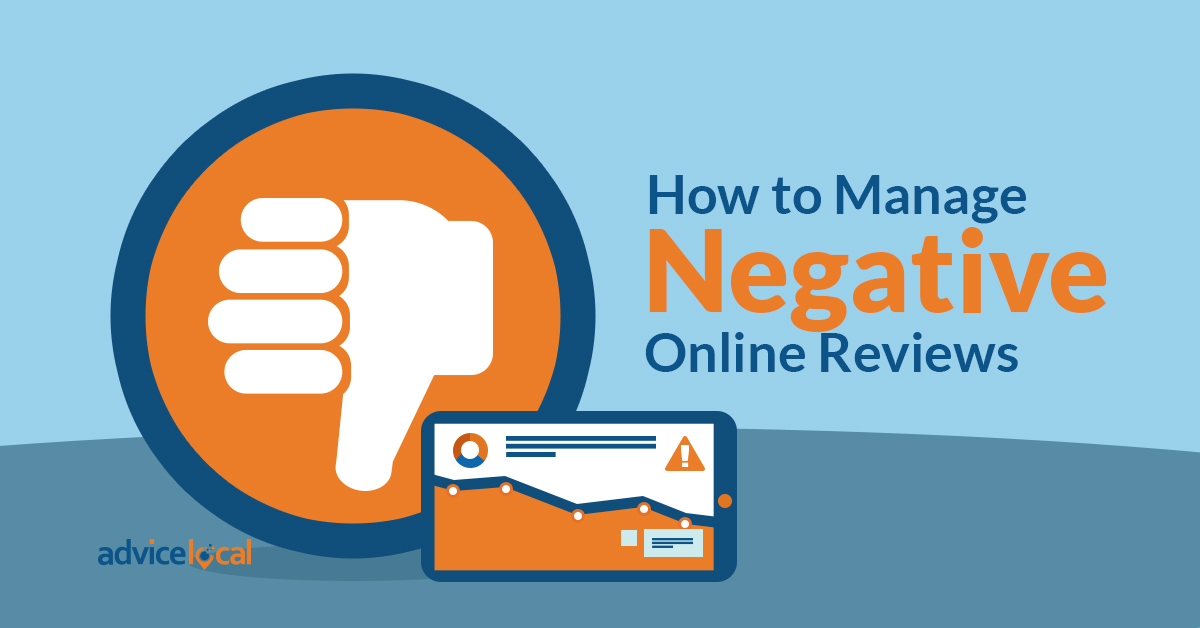In this digital age, where everyone lives and communicates online, online reviews can really make or break a business; therefore, managing reviews must be a priority. Beyond just what the consumer thinks, online reviews are indexed by search engines and positive reviews increase the trust signal for a business.
Today, we are going to talk about negative reviews and how to manage them. To help with that I am going to provide some pointers on how businesses can turn a negative review into a positive result.
3 Methods for Overcoming Negative Online Reviews
In the past, if someone was willing to be a little dishonest, bad online reviews weren’t really a big problem. A business or brand could simply bury them under great reviews that were produced by the business itself, or by someone else paid to write them. However, both of these will be flagged by review sites and only do more harm to the business. Yelp, for example, has started labeling reviews it believes to be fraudulent with a “consumer alert” that tells readers they may not be able to trust what they’re reading, and it probably won’t be long before other big review sites start following suit.
Obviously, a business doesn’t want any page filled with consumer alerts and fake reviews, but that doesn’t mean that bad reviews should be left lying around to fester, either. Instead, there are things to be done properly and honestly to effectively manage a bad review.
1. Verify the Review
First things first: read the review carefully to determine whether or not a real customer is writing about a real experience. Pay attention to information like when the customer claims to have come in or placed an order, and who assisted him or her. Just as businesses have been known to post false positive reviews, sneaky competitors will sometimes post false negative reviews on the sites of other businesses.
If it can’t be determined whether or not a review is real, or if there are doubts, contact the review site. Some sites will take a review down based on the word of the business, while others will do so only if the business can prove the review is fraudulent. However, it never hurts to contact the review site and see what they’re willing to do.
2. Be Responsive
While it can be tempting to just ignore bad reviews, that doesn’t really do the business any favors. If a review site allows the business in question to respond, do so. Just make sure that the business representative does so calmly!
Address the problems the reviewer mentions, apologize, and ask them to contact the business to resolve the situation. Do not offer a refund or promise something free within the public reply. This might incite others to give negative reviews just to get a freebie. Replying to the review shows the business cares and is willing to make amends. In this way a bad review can actually lead to good things, such as building client trust in the business.
3. Play Up the Positive
Enough positive reviews can overcome, and eventually bury, a negative review but they must be honest reviews from actual customers of the business. To encourage more positive reviews, make it easy for customers to write one. For example, add a link to click in the online receipt that takes customers straight to a review site. This will allow them to quickly and easily write something positive about their experience, and the easier it is for the customer, the more likely they are to do it.
Having numerous positive reviews will improve the reputation of a business all across the web, and will also help to negate any bad reviews that exist.
Remember, every business will get a negative review from time to time, but how the business deals with them makes the difference in online reputation. We have just the tool to manage customer reviews!
Do you have any tips to add to the list on how to handle a negative online review? Comment below.




